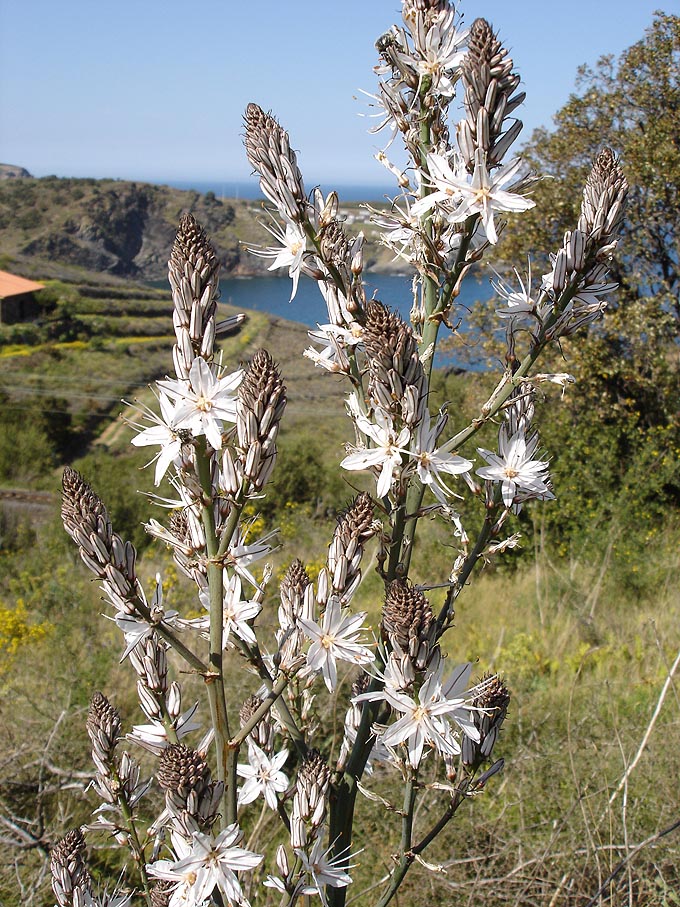|
Taxonomy Of Narcissus
The taxonomy of ''Narcissus'' is complex, and still not fully resolved. Known to the ancients, the genus name appears in Graeco-Roman literature, although their interest was as much medicinal as botanical. It is unclear which species the ancients were familiar with. Although frequently mentioned in Mediaeval and Renaissance texts it was not formally described till the work of Linnaeus in 1753. By 1789 it had been grouped into a family (Narcissi) but shortly thereafter this was renamed Amaryllideae, from which comes the modern placement within Amaryllidaceae, although for a while it was considered part of Liliaceae. Many of the species now considered to be ''Narcissus'' were in separate genera during the nineteenth century, and the situation was further confused by the inclusion of many cultivated varieties. By 1875 the current circumscription was relatively settled. By 2004 phylogenetic studies had allowed the place of ''Narcissus'' within its fairly large family to be establ ... [...More Info...] [...Related Items...] OR: [Wikipedia] [Google] [Baidu] |
Narcissus Poeticus
Narcissus may refer to: Biology * ''Narcissus'' (plant), a genus containing daffodils and others People * Narcissus (mythology), Greek mythological character * Narcissus (wrestler) (2nd century), assassin of the Roman emperor Commodus * Tiberius Claudius Narcissus (1st century), freedman and secretary to the Roman emperor Claudius * Saint Narcissus (other), several saints Film * ''Narcissus'' (1983 film), a film by Norman McLaren * ''Narcissus'' (2012 film), a Lithuanian film * ''Narcissus'' (2015 film), a Tunisian film * ''Pink Narcissus'', a film by James Bidgood * ''Narcissus'', a 1956 film by Willard Maas *''Black Narcissus'', a 1947 film by Powell and Pressburger * ''Narcissus'', an escape shuttle in the ''Aliens'' film series Music * ''Narcissus'', an EP by the Danish band Kellermensch * "Narcissus" (music), a piano piece by Ethelbert Nevin, recorded as a duet by Norman Wisdom and Joyce Grenfell * Narcissus (band) * ''Narcissus'', an opera by Gottfried Hein ... [...More Info...] [...Related Items...] OR: [Wikipedia] [Google] [Baidu] |
Amaryllidoideae
Amaryllidoideae (Amaryllidaceae ''s.s.'', amaryllids) is a subfamily of monocot flowering plants in the family Amaryllidaceae, order Asparagales. The most recent APG classification, APG III, takes a broad view of the Amaryllidaceae, which then has three subfamilies, one of which is Amaryllidoideae (the old family Amaryllidaceae), and the others are Allioideae (the old family Alliaceae) and Agapanthoideae (the old family Agapanthaceae). The subfamily consists of about seventy genera, with over eight hundred species, and a worldwide distribution. Description The Amaryllidoideae are herbaceous, perennial flowering plants, usually with bulbs (some are rhizomatous). Their fleshy leaves are arranged in two vertical columns, and their flowers are large. Most of them are bulbous geophytes and many have a long history of cultivation as ornamental plants. They are distinguished from the other two Amaryllidaceae subfamilies (Agapanthoideae and Allioideae) by their unique alkaloidal ... [...More Info...] [...Related Items...] OR: [Wikipedia] [Google] [Baidu] |
Asphodelus
''Asphodelus'' is a genus of mainly perennial flowering plants in the asphodel family Asphodelaceae that was first described by Carl Linnaeus in 1753. The genus was formerly included in the lily family (Liliaceae). The genus is native to temperate Europe, the Mediterranean, Africa, the Middle East, and the Indian Subcontinent, and some species have been introduced to, and are now naturalized in, other places such as New Zealand, Australia, Mexico and southwestern United States. Many asphodels are popular garden plants, which grow in well-drained soils with abundant natural light. Character The plants are hardy herbaceous perennials with narrow tufted radical leaves and an elongated stem bearing a handsome spike of white or yellow flowers. ''Asphodelus albus'' and '' A. fistulosus'' have white flowers and grow from high; '' A. ramosus'' is a larger plant, the large white flowers of which have a reddish-brown line in the middle of each segment. Etymology The genus name is derived ... [...More Info...] [...Related Items...] OR: [Wikipedia] [Google] [Baidu] |
Historia Plantarum (Theophrastus)
Theophrastus's ''Enquiry into Plants'' or ''Historia Plantarum'' ( grc-gre, Περὶ φυτῶν ἱστορία, ''Peri phyton historia'') was, along with his mentor Aristotle's ''History of Animals'', Pliny the Elder's '' Natural History'' and Dioscorides's ''De materia medica'', one of the most important books of natural history written in ancient times, and like them it was influential in the Renaissance. Theophrastus looks at plant structure, reproduction and growth; the varieties of plant around the world; wood; wild and cultivated plants; and their uses. Book 9 in particular, on the medicinal uses of plants, is one of the first herbals, describing juices, gums and resins extracted from plants, and how to gather them. ''Historia Plantarum'' was written some time between c. 350 BC and c. 287 BC in ten volumes, of which nine survive. In the book, Theophrastus described plants by their uses, and attempted a biological classification based on how plants reproduced, a first i ... [...More Info...] [...Related Items...] OR: [Wikipedia] [Google] [Baidu] |
Theophrastus
Theophrastus (; grc-gre, Θεόφραστος ; c. 371c. 287 BC), a Greek philosopher and the successor to Aristotle in the Peripatetic school. He was a native of Eresos in Lesbos.Gavin Hardy and Laurence Totelin, ''Ancient Botany'', Routledge, 2015, p. 8. His given name was Tyrtamus (); his nickname (or 'godly phrased') was given by Aristotle, his teacher, for his "divine style of expression". He came to Athens at a young age and initially studied in Plato's school. After Plato's death, he attached himself to Aristotle who took to Theophrastus in his writings. When Aristotle fled Athens, Theophrastus took over as head of the Lyceum. Theophrastus presided over the Peripatetic school for thirty-six years, during which time the school flourished greatly. He is often considered the father of botany for his works on plants. After his death, the Athenians honoured him with a public funeral. His successor as head of the school was Strato of Lampsacus. The interests of Theophrastus ... [...More Info...] [...Related Items...] OR: [Wikipedia] [Google] [Baidu] |
Narcissus (mythology)
In Greek mythology, Narcissus (; Ancient Greek: Νάρκισσος ''Nárkissos'') was a hunter from Thespiae in Boeotia (alternatively Mimas or modern day Karaburun, Izmir) who was known for his beauty. According to Tzetzes, he rejected all romantic advances, eventually falling in love with his own reflection in a pool of water, staring at it for the remainder of his life. After he died, in his place sprouted a flower bearing his name. The character of Narcissus is the origin of the term narcissism, a fixation with oneself. This quality, in turn, contributes to the definition of narcissistic personality disorder, a psychiatric condition marked by grandiosity, excessive need for attention and admiration, and an inability to empathize. Like the myth of Laius and Chrysippus, the myth of Narcissus is a Boeotian pederastic cautionary tale, a story meant to teach by counter-example. Etymology The name is of Greek etymology. According to R. S. P. Beekes, " e suffixes ισ ... [...More Info...] [...Related Items...] OR: [Wikipedia] [Google] [Baidu] |
Iberian Peninsula
The Iberian Peninsula (), ** * Aragonese and Occitan: ''Peninsula Iberica'' ** ** * french: Péninsule Ibérique * mwl, Península Eibérica * eu, Iberiar penintsula also known as Iberia, is a peninsula in southwestern Europe, defining the westernmost edge of Eurasia. It is principally divided between Spain and Portugal, comprising most of their territory, as well as a small area of Southern France, Andorra, and Gibraltar. With an area of approximately , and a population of roughly 53 million, it is the second largest European peninsula by area, after the Scandinavian Peninsula. Name Greek name The word ''Iberia'' is a noun adapted from the Latin word "Hiberia" originating in the Ancient Greek word Ἰβηρία ('), used by Greek geographers under the rule of the Roman Empire to refer to what is known today in English as the Iberian Peninsula. At that time, the name did not describe a single geographical entity or a distinct population; the same name was us ... [...More Info...] [...Related Items...] OR: [Wikipedia] [Google] [Baidu] |
Miocene
The Miocene ( ) is the first geological epoch of the Neogene Period and extends from about (Ma). The Miocene was named by Scottish geologist Charles Lyell; the name comes from the Greek words (', "less") and (', "new") and means "less recent" because it has 18% fewer modern marine invertebrates than the Pliocene has. The Miocene is preceded by the Oligocene and is followed by the Pliocene. As Earth went from the Oligocene through the Miocene and into the Pliocene, the climate slowly cooled towards a series of ice ages. The Miocene boundaries are not marked by a single distinct global event but consist rather of regionally defined boundaries between the warmer Oligocene and the cooler Pliocene Epoch. During the Early Miocene, the Arabian Peninsula collided with Eurasia, severing the connection between the Mediterranean and Indian Ocean, and allowing a faunal interchange to occur between Eurasia and Africa, including the dispersal of proboscideans into Eurasia. During the ... [...More Info...] [...Related Items...] OR: [Wikipedia] [Google] [Baidu] |
Oligocene
The Oligocene ( ) is a geologic epoch of the Paleogene Period and extends from about 33.9 million to 23 million years before the present ( to ). As with other older geologic periods, the rock beds that define the epoch are well identified but the exact dates of the start and end of the epoch are slightly uncertain. The name Oligocene was coined in 1854 by the German paleontologist Heinrich Ernst Beyrich from his studies of marine beds in Belgium and Germany. The name comes from the Ancient Greek (''olígos'', "few") and (''kainós'', "new"), and refers to the sparsity of extant forms of molluscs. The Oligocene is preceded by the Eocene Epoch and is followed by the Miocene Epoch. The Oligocene is the third and final epoch of the Paleogene Period. The Oligocene is often considered an important time of transition, a link between the archaic world of the tropical Eocene and the more modern ecosystems of the Miocene. Major changes during the Oligocene included a global expansion o ... [...More Info...] [...Related Items...] OR: [Wikipedia] [Google] [Baidu] |
Hybrid (biology)
In biology, a hybrid is the offspring resulting from combining the qualities of two organisms of different breeds, varieties, species or genera through sexual reproduction. Hybrids are not always intermediates between their parents (such as in blending inheritance), but can show hybrid vigor, sometimes growing larger or taller than either parent. The concept of a hybrid is interpreted differently in animal and plant breeding, where there is interest in the individual parentage. In genetics, attention is focused on the numbers of chromosomes. In taxonomy, a key question is how closely related the parent species are. Species are reproductively isolated by strong barriers to hybridisation, which include genetic and morphological differences, differing times of fertility, mating behaviors and cues, and physiological rejection of sperm cells or the developing embryo. Some act before fertilization and others after it. Similar barriers exist in plants, with differences in flowering tim ... [...More Info...] [...Related Items...] OR: [Wikipedia] [Google] [Baidu] |
Series (botany)
In botany and plant taxonomy, a series is a subdivision of a genus, a taxonomic rank below that of section (and subsection) but above that of species. Sections and/or series are typically used to help organize very large genera, which may have hundreds of species. Cultivar marketing The term "series" is also used (in seed marketing) for groupings of cultivars, but this term has no formal status with that meaning in the ''ICNCP The ''International Code of Nomenclature for Cultivated Plants'' (ICNCP), is a guide to the rules and regulations for naming cultigens, plants whose origin or selection is primarily due to intentional human activity. It is also known as Cultivate ...''.Glossary in References Botanical nomenclature Plant taxonomy {{Botany-stub ... [...More Info...] [...Related Items...] OR: [Wikipedia] [Google] [Baidu] |
Section (botany)
In botany, a section ( la, sectio) is a taxonomic rank below the genus, but above the species. The subgenus, if present, is higher than the section, and the rank of series, if present, is below the section. Sections may in turn be divided into subsections.Article 4 in Sections are typically used to help organise very large genera, which may have hundreds of species. A botanist wanting to distinguish groups of species may prefer to create a taxon at the rank of section or series to avoid making new combinations, i.e. many new binomial names for the species involved. Examples: * ''Lilium'' sectio ''Martagon'' Rchb. are the Turks' cap lilies * ''Plagiochila aerea'' Taylor is the type species of ''Plagiochila'' sect. ''Bursatae'' See also * Section (biology) References Section Section, Sectioning or Sectioned may refer to: Arts, entertainment and media * Section (music), a complete, but not independent, musical idea * Section (typography), a subdivision, especially ... [...More Info...] [...Related Items...] OR: [Wikipedia] [Google] [Baidu] |








